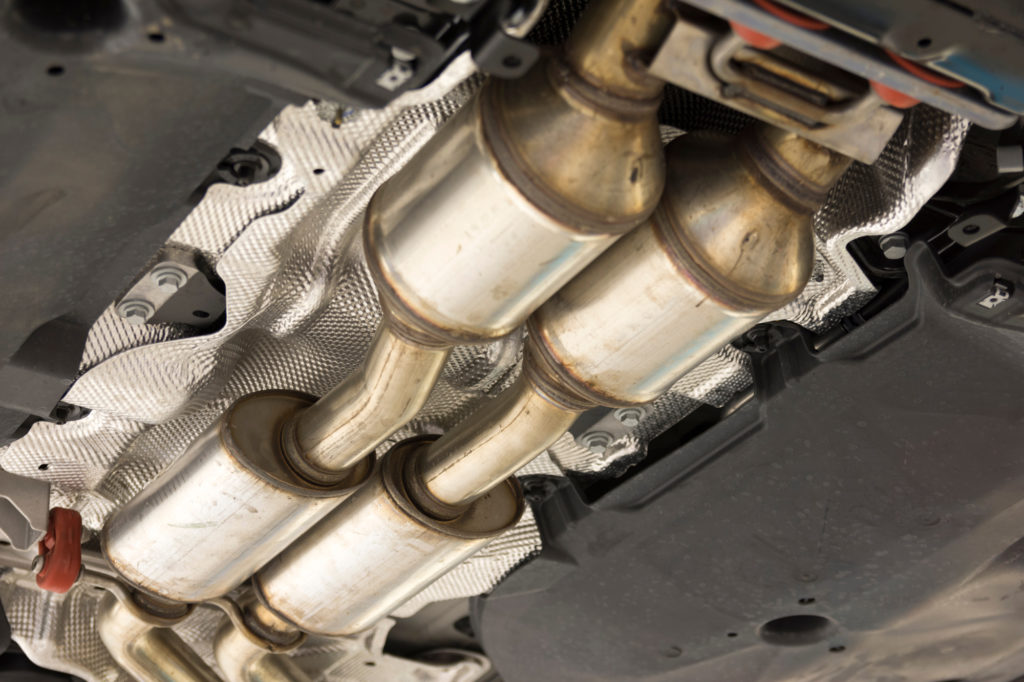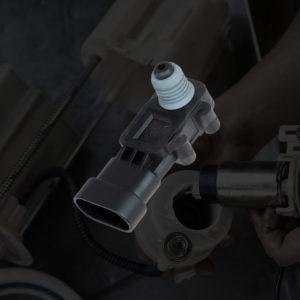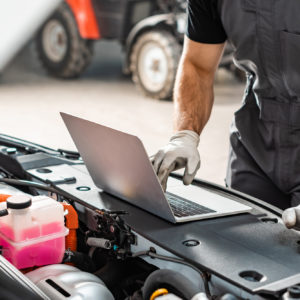The catalytic converter requires a certain temperature range to operate efficiently and safely. To make sure it runs hot enough to clean emissions without overheating, the powertrain control module (PCM) monitors its temperature. The controller relies on oxygen sensors to serve as catalyst temperature sensors that provide it with accurate readings.
If the oxygen sensor or catalyst temperature sensor 1 on the engine’s cylinder bank 1 sends the wrong signal, the PCM will log a P0426 code.
What Does the P0426 Code Mean?
Diagnostic trouble code (DTC) P0426 stands for “Catalyst Temperature Sensor Circuit Range/Performance Bank 1 Sensor 1.” It involves the upstream oxygen sensor (sensor 1) on the same side as the engine’s bank 1.
The catalytic converter breaks down toxic exhaust gases into harmless substances that it can release into the atmosphere safely without violating federal and state emission standards.

Oxygen sensors keep track of the catalytic converter’s efficiency. Upstream sensors measure the oxygen content in the gases entering the converter’s inlet, while downstream sensors do the same for the exhaust exiting from the outlet. When the catalytic converter is working properly, its outlet temperature is slightly hotter than the inlet.
The PCM regularly checks the catalyst temperature sensors by comparing their signals with the values stored in its memory. If the computer doesn’t get the right response from the upstream oxygen sensor on engine bank 1, it will set the generic code P0426.
Note: The definition of code P0426 can differ depending on the vehicle manufacturer. Check the appropriate repair manual or repair database for the exact code definition.
What are the Common Causes of the P0426 Code?
- Bad oxygen sensor
- Issues with the wiring
- Imbalanced exhaust air/fuel mixture
- Faulty PCM
- Bad PCM programming
What are the Common Symptoms of the P0426 Code?
- Check engine light illuminates
- Reduced engine performance
- Poor fuel economy
- Higher emission level

How to Diagnose the P0426 Code
The P0426 code is a generic powertrain code. Various makes and models of OBD-II-compliant vehicles can set this trouble code. Not every instance of a P0426 can be identified and resolved the same way.
It’s best to bring your vehicle to a professional auto service center to determine what went wrong with its catalyst temperature sensor. If you have experience and skill in auto repair, you can save on labor costs by testing your vehicle yourself.
How to Fix the P0426 Code
Without the right tools and know-how to test and replace the catalyst temperature sensor, fixing a P0426 code can be difficult. That’s why it’s usually best to leave the task to a licensed mechanic.
But if you have advanced technical knowledge and hands-on experience, you can resolve the issue on your own. Make sure to rely on the appropriate repair manual or refer to an online repair database. These resources can help you do the job faster, such as locating the upstream oxygen sensor on the engine bank 1 side. They also contain vehicle-specific repair information.
Where to Get a New Oxygen Sensor for Your Vehicle
You’ll likely find that a faulty oxygen sensor is what’s triggering the P0426 code in your vehicle and causing the related symptoms. Poor fuel economy, higher emission levels, and the code itself are all indicators that it’s time to replace the problematic part. Thankfully, CarParts.com has just what you need.
The CarParts.com catalog contains a wide range of aftermarket parts from various trusted manufacturers. We sell these parts at different price points to suit individual budgets. Whether you want a high-quality performance part or a replacement for a faulty stock part, we guarantee you’ll be satisfied with our offers. We have a 60-day return policy so you can shop with confidence, and our support team is available around the clock in case you have any troubles.
Don’t allow yourself to suffer through poor fuel economy and increased emissions for long. Visit CarParts.com today to purchase a replacement oxygen sensor.
Any information provided on this Website is for informational purposes only and is not intended to replace consultation with a professional mechanic. The accuracy and timeliness of the information may change from the time of publication.


















